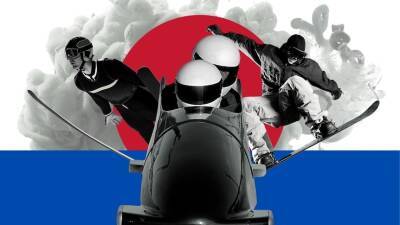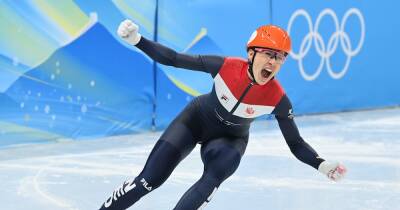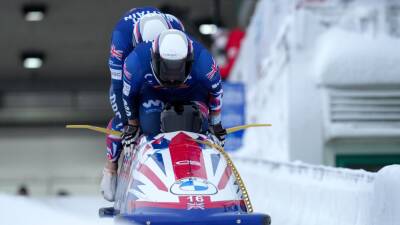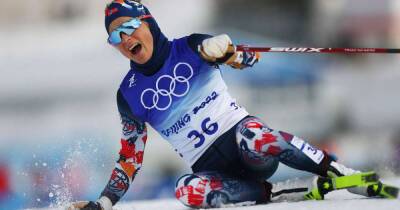Winter Olympics: Why is luge the 'fastest sport on ice'?
Athletes whizz at speeds above the motorway limit down sheer ice on small sleds in both sports — but what makes luge faster than skeleton?
Average luge speeds are 120-145km/h, with skeleton at 120-130km/h, and Luge USA even once patented the phrase 'fastest sport on ice'.
Rupert Staudinger, Team GB's only luge athlete at Beijing 2022, explains the differences and why the answer lies — of course — in simple physics.
To the casual viewer, watching the sports at the Olympics every four years, the feet-first aspect of luge can make it seem — marginally — less terrifying than the head-first position of skeleton.
But that is misplaced if you're thinking about it in terms of speed.
The surface area of a big round helmet is much bigger than the surface area of two feet and therefore creates much more drag, which slows down the sled.
The same also applies to bobsleigh, the other of the three sliding sports.
«The cross-section of the whole area of the bob is so much bigger so that makes it slower in relation to us because we have a smaller cross-section area with less drag,» Staudinger, 24, explained.
Luge athletes wear smooth boots to further reduce drag.
You might think that the standing start in skeleton and bobsleigh, where athletes push the sled while sprinting before jumping on board, would result in faster top speeds on the track.
But luge athletes start seated — so how does that work?
It's all about the ramp. When luge athletes push off the bars and paddle themselves forwards with their hands in spiked gloves on the track, they are starting above the track and drop down a slope on to it.
«On flat ice that wouldn't be quicker but as we have the ramp that's higher up we are faster from the start on,» Staudinger said.
In all the sliding








